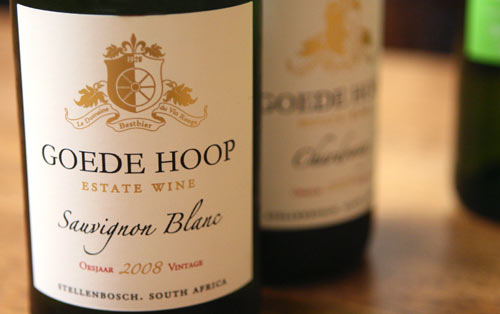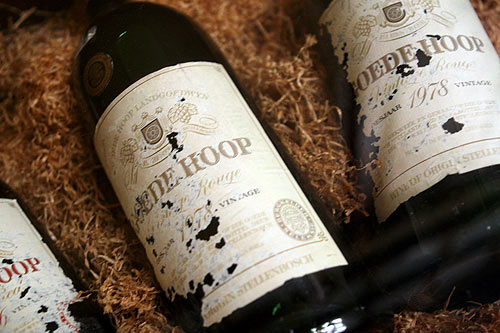
The Bottelary Kloof area of the greater Stellenbosch wine region of Cape Town is indeed lovely to drive through. While not the staggering peaks seen in other parts of the region, the gently-rolling hills carry you along through vineyards and wineries until you come to a location such as Goede Hoop. While meaning “good hope” in English, when properly pronounced in Afrikaans, it sounds more like “hula hoop”, although this is an English speaker making that approximation so take it with a grain of salt.
At 120 hectares, the vineyards of the winery are not small, although, in terms of Cape Town wineries, it isn’t really that old, having started in 1880 and purchased by the Bestbier family (who are still the current owners) in 1928. As it was the late, Southern Hemisphere Fall, and the winery is composed of a rolling conglomeration of lovely 19th century buildings, I walked around for a bit until coming to find the winemaker, Albert Ahrens.
Albert is a reserved, easygoing fellow who is deeply passionate about winemaking. He took over the winemaking at the winery a short time ago and is heavily adamant about aging in concrete tanks vs. stainless steel. He’s part of a growing number of winemakers who find it to be a neutral process which doesn’t set up a reaction between the tank and fermenting juice. I’ve been on the fence as to how much difference this makes in the final bottle, but it is true that it certainly doesn’t detract from the wines and serves as an interesting change to winemaking although it still needs to be approached with care.

The vintages that I tasted were the last few bottles made by Albert’s predecessor and as such were a different style than what I tasted from the tanks that was yet to come. For instance the 2009 Domaine is a straightforward, blend of Sauvignon Blanc and Chenin Blanc aimed at the local market. The nose is light and straightforward and lacks a lot of subtlety, but it’s meant more to have on a hot day with a couple of ice cubes tossed in it to enjoy the passion fruit elements that are present. It costs R 30 (R = Rand, $1 ~= R 7.75)
The 2008 Sauvignon Blanc has a soft, light nose. There are citrus elements in the body with a slightly acidic element overall and green apple on the finish. It’s a white that would be well-paired with heavier meals amazingly. R 45
The 2009 Chardonnay has a heavy lemon nose that allows a touch of the oak through. There’s hazelnut in the body and it’s not super buttery which is a welcome change to the pile of New World Chardonnays that are plush with butter. R 69
The 2002 Merlot/Cabernet Sauvignon has a silky, plum nose. The body is excellent with peppercorn and tobacco elements. The finish comes out nice and dry and makes for a truly superb wine. R 58
The 2001 Cabernet Sauvignon also has that plummy nose. The body is wonderfully soft and cushioning, plush on the palate. It is dry, peppery, and refreshing. Amazingly, the nose is also somewhat mineraly which was a nice surprise. The wine is overall not overpowering and has a very well-balanced amount of oak. Another fine bottle. R 108
If one is to encounter the Goede Hoop wines, I would very much recommend trying them. Even if you take the very affordable prices out of the equation (Cape wines are in general, very well-priced) they’re quite pleasing bottles and it will be interesting to see what Albert’s take is producing for the winery as well as those wines he’s helping to make from the Swartland area. As shown by some samples of his side projects, he is very adept at making subtle wines that please on many levels.
We talk a great deal more about the wines of Stellenbosch and other Cape Town wineries in our Stellenbosch wine guide.
